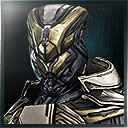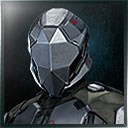| Pages: [1] :: one page |
| Author |
Thread Statistics | Show CCP posts - 0 post(s) |

Avallo Kantor
1193
   |
Posted - 2017.01.20 19:47:00 -
[1] - Quote
An idea from Discord that I would like to flesh out more in a larger post that will not be buried so quickly.
Abstract:
It is said that Rattati prefers smaller scale battles, and that NOVA will, at its offset, will focus on small battles. In addition, many players have expressed concern that if battles become too large in scale that the individual efforts of players, and thus their fits, will become trivialized in the clash of so many people.
However, there is a way to break things up in such a way that a conflict can still involve a large number of players without forcing them to all be swarming around the same point, or to avoid encouraging roving zerg tactics. The solution is to break up a conflict into several individual battles (or matches) that can run both in sequence and in parallel. Add in effects and objectives that influence other matches (Either later in sequence, or in a parallel battle) and these conflicts can become suitably large without any individual match going beyond the small scale that was exhibited in DUST.
Two concepts:
Multi-stage battle: A series of matches that are played in a sequence. Map choice and objectives may be dependent on the resolution of previous matches. This can facilitate shorter matches, while having longer (or equal length) battles overall. As an example, instead of one 30-min match, have 3 10-min matches. The matches would go from: Boarding a ship -> Assaulting the Guns -> Assaulting the bridge, as an example.
Multi-Team battle: A series of matches that are played in parallel. Each match is of a certain size (ex: 16 v 16) but because multiple matches are occurring at once then you could have 2 or 3 matches each with 16 v 16 to have the equivalent of 32 or 48 players per side.
The Goal:
The end result of this is to have battles that are much larger in scope than the outcome of any individual match. In addition because each individual match has a small player count, it is easier to allow for squad based gameplay, customization of dropsuits to have an impact, and for smaller map size need overall. All of which are goals of the developers that have been stated in the past. However, in addition this style allows for a feeling of larger scale, persistence between a series of matches, and a game mode that allows for a feeling of a far grander scale.
Example:
As an example story in relation to Nova's ship based focus: A conflict could be waged over a larger ship type, such as a battleship that requires multiple assault teams fighting in concert to take the ship.
When the battle begins three teams are sent in, One to the Outward guns, One to the Armory, and one to a security station.
If the Outward Guns team is successful, all future battles will see an increase in Attacker clone count as more clones can be safely sent over to the ship via boarders.
The armory match will have two objectives. One that while held will cause the Outward Guns match to have the defenders start bleeding clone count (As their reinforcements are getting cut off) The other will do the same to the security station. [Mechanically the bleed out can be a boolean flag that is turned on or off in the other match] However, in this match the defender clone counts are far larger than the other two maps.
The Security Station attackers are tasked with holding a single capture point until end of match. If they succeed then blast doors in later matches are forced open. (Allowing new routes in later maps that are beneficial to the attack) on the other end, if the blast doors remain closed, the map will lead through passages that bias toward the Defender.
The next series of battles will determine the outcome.
The Engine Room, The Bridge, The Reactor.
Each map will have a side objective that begins neutral. It is away from the main combat area and holding them will start to bleed out the Enemy team clone count (or some other effect?) in another map.
"Mind Blown" - CCP Rattati
|

Pokey Dravon
OSG Planetary Operations
8917
   |
Posted - 2017.01.21 01:26:00 -
[2] - Quote
Yep yep this was a good discussion.
I actually started thinking about this idea a while ago while working on an Biomassed blog post (coming soon) discussion player counts in game modes. More specifics on this when the article comes out, but it effectively speaks about a maximum effective game size and that after a certain point, more players requires more space to a point where your average player will never directly interact with most of the players in the match simply because they're too far away. At which point I ask....why bother having them there?
So yes you could have very large player counts like the game MAG did (which sported 128 vs 128) player battles, but even those fighters were segmented into 4 quadrents, so the battle was effectively 32v32 where the outcome of your own battle would help your collective team win the whole battle. Could Nova take this approach? Sure, but I feel like that's such a waste given the lore and local we have to work with.
We already know the battles in Nova will be something like 16v16 and honestly that's OK. But why not take it a step further and have those battle interact and remain persistent? One group could fight inside and orbital satellite, and if they gain control they can fire orbital strikes at the planet to help through ground team. One team could activate a power relay in one battle and speed up spawn time for their team in another. The options are really quite diverse.
Hell, you could even link battles of different sizes and play types. For example a small elite 4v4 battle could take place in the depths of complex to capture an energy node while a linked 16v16 battle rages on the surface above.
---
Plus there is the idea of the coveted "Commander Role". For example you could have 3 linked battles going on at the same time, all fighting for a common goal and activating secondary objectives to help their allies in the other battle. But what if there was an extra person on each side? One that didn't participate directly, but rather oversaw the larger scale strategic gameplay? The Commander would in charge of monitoring all the battles simultaneously, allocating resources and using abilities to help allies or hinder enemies in specific battles. For example if one battle is going poorly, the Commander could move resources that battle to help compensate for the weakness.
In short Commanders would in charge of the strategic coordination of the whole war, while the individual Battle Commanders would be in charge of the tactical execution of their respective battles.
EVE: Phoenix - 'Rise Again' Trailer
|

Aeon Amadi
14000
   |
Posted - 2017.01.21 10:12:00 -
[3] - Quote
Pokey Dravon wrote:Yep yep this was a good discussion.
I actually started thinking about this idea a while ago while working on an Biomassed blog post (coming soon) discussion player counts in game modes. More specifics on this when the article comes out, but it effectively speaks about a maximum effective game size and that after a certain point, more players requires more space to a point where your average player will never directly interact with most of the players in the match simply because they're too far away. At which point I ask....why bother having them there?
So yes you could have very large player counts like the game MAG did (which sported 128 vs 128) player battles, but even those fighters were segmented into 4 quadrents, so the battle was effectively 32v32 where the outcome of your own battle would help your collective team win the whole battle. Could Nova take this approach? Sure, but I feel like that's such a waste given the lore and local we have to work with.
We already know the battles in Nova will be something like 16v16 and honestly that's OK. But why not take it a step further and have those battle interact and remain persistent? One group could fight inside and orbital satellite, and if they gain control they can fire orbital strikes at the planet to help through ground team. One team could activate a power relay in one battle and speed up spawn time for their team in another. The options are really quite diverse.
Hell, you could even link battles of different sizes and play types. For example a small elite 4v4 battle could take place in the depths of complex to capture an energy node while a linked 16v16 battle rages on the surface above.
---
Plus there is the idea of the coveted "Commander Role". For example you could have 3 linked battles going on at the same time, all fighting for a common goal and activating secondary objectives to help their allies in the other battle. But what if there was an extra person on each side? One that didn't participate directly, but rather oversaw the larger scale strategic gameplay? The Commander would in charge of monitoring all the battles simultaneously, allocating resources and using abilities to help allies or hinder enemies in specific battles. For example if one battle is going poorly, the Commander could move resources that battle to help compensate for the weakness.
In short Commanders would in charge of the strategic coordination of the whole war, while the individual Battle Commanders would be in charge of the tactical execution of their respective battles.
IMO, I think Battlefield 1 really nailed it with their 'Operations' game-mode. They have multiple maps and you have to push objectives in segments, so one map will be divided into five sectors and each sector has two-three objectives and you can only reach the next sector by completely capturing the one before it. Attackers have three battalions (250 'tickets' - clones I guess - each) to win all the maps. It gets really really interesting, especially when you have a team that has some coordination.
(Former) CPM2 Representative for Dust 514 and Project Nova
Twitter: @Aeon_Amadi
Eve: Nomistrav
|

Vrain Matari
Mikramurka Shock Troop
Minmatar Republic
3198
   |
Posted - 2017.01.22 14:32:00 -
[4] - Quote
Looking specifically at multi-team battles, they might be a good balancing mechanic in elite vs zerg corp game design.
Dust's match-based design and near-total disregard for stellar geography/topology(i.e. practically infinite force projection) was a strong advantage for elite corps. It didn't take long before that stultified the gameplay & politics of the ground game.
Imo Nova has a lot to gain from mechanics like multi-team which could make the cheap & dirty mob vs. expensive elites argument a whole lot more interesting. Also multi-team adds gameplay/social opportunities, and could easily be one important driver for a genuine mercenary economy - praying the devteam institutes real contracts with realistic conditions for npc and player corp issued contracts. Lots of good immersive gameplay to be had there.
P.S. 16v16 seemed fine as a size, even with Dust's large maps - so long as the match was filled and peeps weren't quitting the match, which was a BIG problem Dust had with it's game design.
droolin' for dat Novabacon
|

Lightning35 Delta514
Federation Marines 62
5142
   |
Posted - 2017.01.23 23:35:00 -
[5] - Quote
purpel team vs grean team. true quafe battle
CEO of Federation Marines 62 - Bravo Company
Gallente - Freedom - Quafe - Gk.0s/Gv.0s - 72m SP
|
| |
|
| Pages: [1] :: one page |
| First page | Previous page | Next page | Last page |